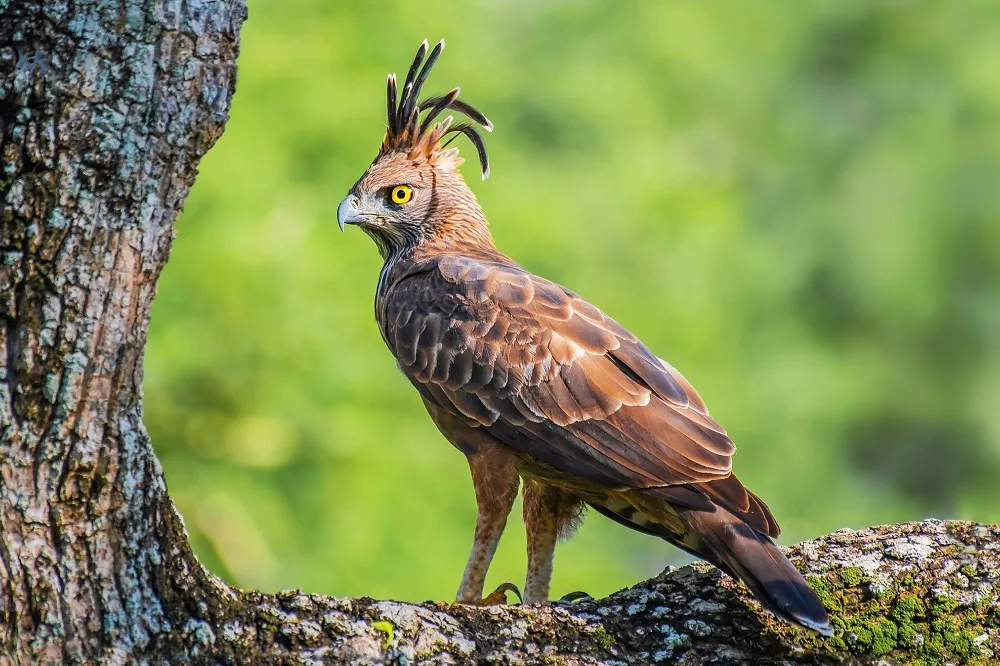Changeable hawk-eagles are large birds of prey that inhabit the forests and woodlands of Southeast Asia. These majestic birds are known for their impressive size, powerful talons, and sharp beaks, making them a formidable predator in the wild. In this article, we will explore just how big changeable hawk-eagles can grow, and what makes them such an awe-inspiring species.
Introduction to Changeable Hawk-Eagles
The Changeable hawk-eagle (Nisaetus cirrhatus), formerly known as Spizaetus cirrhatus, is a bird of prey found throughout Southeast Asia. They are found in Bangladesh, Bhutan, Brunei, Cambodia, China, India, Indonesia, Laos, Malaysia, Myanmar, Nepal, Philippines, Singapore, Thailand, and Vietnam. These birds prefer to live in dense forests and woodland habitats, where they hunt a variety of prey items including small mammals, reptiles, and other birds.
Size and Physical Characteristics
One of the most notable features of changeable hawk-eagles is their impressive size. These birds are one of the largest raptors found in their range, with a wingspan that can reach up to 150 cm (4.9 ft) and a body length of around 70-90 cm (2.3-3.0 ft). The average weight of an adult changeable hawk-eagle is between 1.5-2.8 kg (3.3-6.2 lbs), with females being larger than males.
In terms of physical appearance, changeable hawk-eagles have a distinctive pattern of black and white feathers on their wings and tail, which helps to distinguish them from other raptor species. Their upperparts are dark brown, while their underparts are lighter in color with fine white bars. They also have a prominent crest of feathers on their head, which they can raise or lower depending on their mood or level of aggression.
Habitat and Distribution
Changeable hawk-eagles are found throughout Southeast Asia, where they inhabit a range of forested habitats including tropical rainforests, deciduous forests, and montane forests. They can also be found in secondary growth forests and wooded areas near human settlements. In general, changeable hawk-eagles prefer to live in areas with tall trees and dense vegetation, which provide them with plenty of cover for hunting and nesting.
Behavior and Diet
As with many birds of prey, hunting is a primary activity for changeable hawk-eagles. These birds use their keen eyesight and powerful talons to catch a variety of prey items, including snakes, lizards, rodents, and other birds. They are known for their agility and speed in flight, which allows them to chase down prey both in the air and on the ground.
In addition to hunting, changeable hawk-eagles are also known for their distinctive vocalizations. These birds have a loud, piercing call that they use to communicate with each other and to defend their territories from other raptors.
Conservation Status
Despite being one of the largest raptors in Southeast Asia, changeable hawk-eagles are considered to be a species of least concern by the International Union for Conservation of Nature (IUCN). This means that their populations are currently stable and not at risk of significant decline.
However, like many bird species, changeable hawk-eagles do face threats from habitat loss and human disturbance. Logging, agriculture, and urbanization are all factors that can reduce the availability of suitable habitat for these birds, while hunting and persecution by humans can also impact their populations.
Conclusion
In conclusion, changeable hawk-eagles are an impressive and fascinating species of raptor found throughout Southeast Asia. With their large size, distinctive appearance, and impressive hunting abilities, they are a true marvel of the natural world. While their populations are currently stable, it is important to continue monitoring these birds and working to protect their habitat in order to ensure that they remain a vital part of Southeast Asia’s ecosystem for generations to come.


 Facebook
Facebook  Instagram
Instagram  Youtube
Youtube 